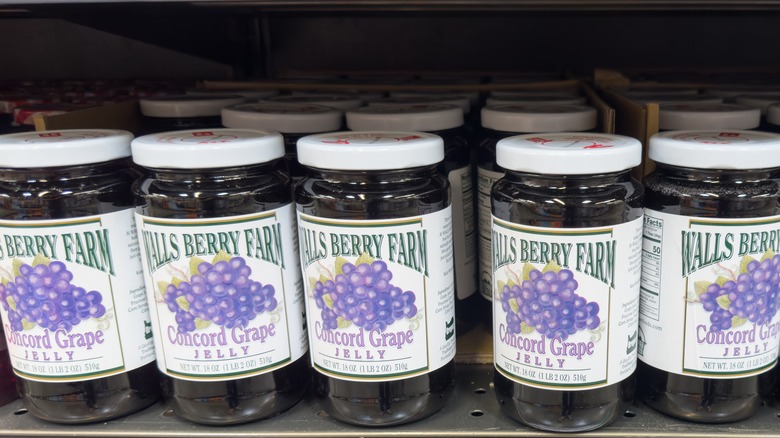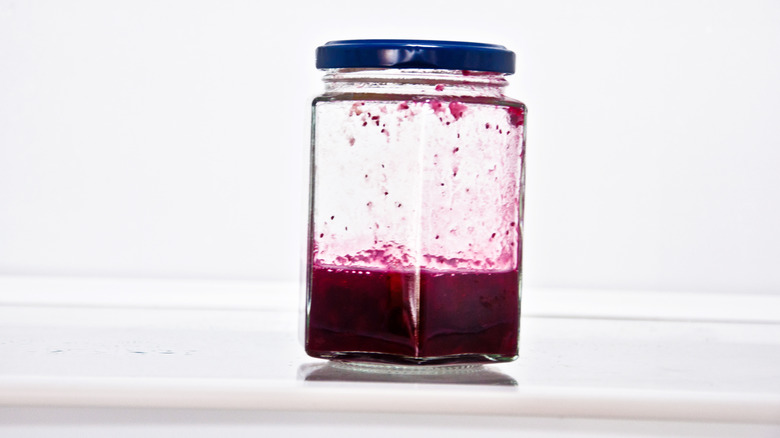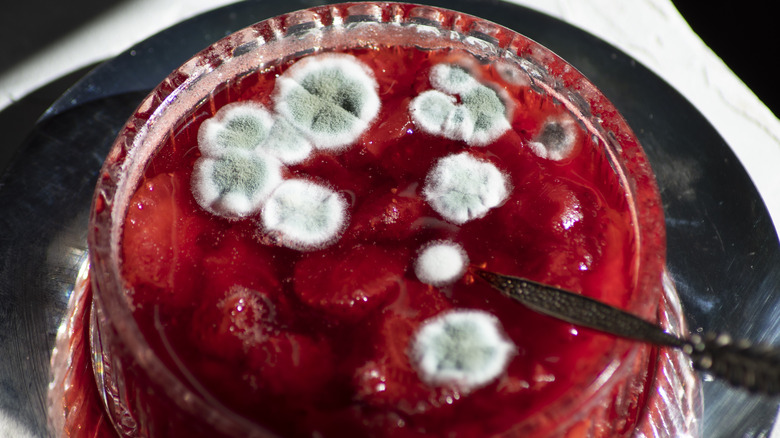How Long That Opened Jar Of Jelly Is Really Good For
Nothing takes you back to childhood like a peanut butter and jelly sandwich (with the proper peanut butter-to-jelly ratio, naturally), but if you don't have kids (or you don't eat toast all that often) that new jar of opened jelly will likely sit in your fridge for a while, unused. Then, a few months later you'll get a renewed craving, this time for PB&J rugelach perhaps, and you might wonder: Is that jelly still good?
You're in luck! A store-bought opened jar of jelly is good in the fridge for up to six months (via the USDA Food and Safety Inspection Service) – while an unopened jar is good in your pantry for up to a year. It's important that you do not leave an open jar of jelly out on the counter for longer than two hours. After two hours, the jelly within can become warm enough that it develops into a breeding ground for harmful bacteria.
A quick word on expiration dates. Jelly has enough sugar in it (it's the sugar content, acting as a preservative, that allows for it to be refrigerated for so long and not go bad) that it could very likely still be edible after the expiration date. However, you do chance foodborne illness if you consume it after the expiration date has passed, even if it looks, smells, or tastes fine. Our advice? Toss it.
Some storage tips for jelly
Opened jars of jelly, like all perishables, must be uniformly kept at 40 degrees Fahrenheit or colder in the refrigerator. If you're not sure when you're going to use it again, you can keep it in the back, on a lower shelf, where it's the coldest in your fridge. This way, it won't be as repeatedly exposed to room temperature air as it might be in, say, the door (which could be your first inclination for storing it). Keeping jelly at the proper temp is hugely important to its preservation, as fluctuations can negatively affect not only how it looks, but how it tastes, too.
The jar should also be sealed properly and tightly. If there's an issue with the jar and its lid, you'll want to transfer the jelly to an airtight container. This is to prevent bacteria from making its way into the jelly, whether it be from exposure to outside air when the fridge opens or any contaminants in the other food in your fridge.
Signs your jelly has gone bad
Of course, there's no holding back the adverse effects of time, particularly if your jelly wasn't necessarily stored properly. If you open it up and immediately something doesn't smell right — it's no longer purely sweet, but now also has a rank, sour odor, or it smells like fermentation has started to take place (think: alcohol), chances are good it has gone bad and should be thrown out.
There's also its appearance to be considered. In the jelly-making process, sugar and water bind together with the other ingredients. As the jelly degrades, the two can separate once again. While some separation throughout the course of the jelly's life is normal, if it has separated and it's near the six-month mark, it's probably best to err on the side of caution. Finally, the best and easiest way to tell if your jelly has gone past its prime is the appearance of mold. Jelly that has mold on it should always be thrown out, because it is just the tip of the iceberg — its spores are very likely all throughout the jar, you just can't see them. And you don't want to get everyone sick eating your grape jelly meatballs because you scraped mold off the top and used it anyway, do you?


